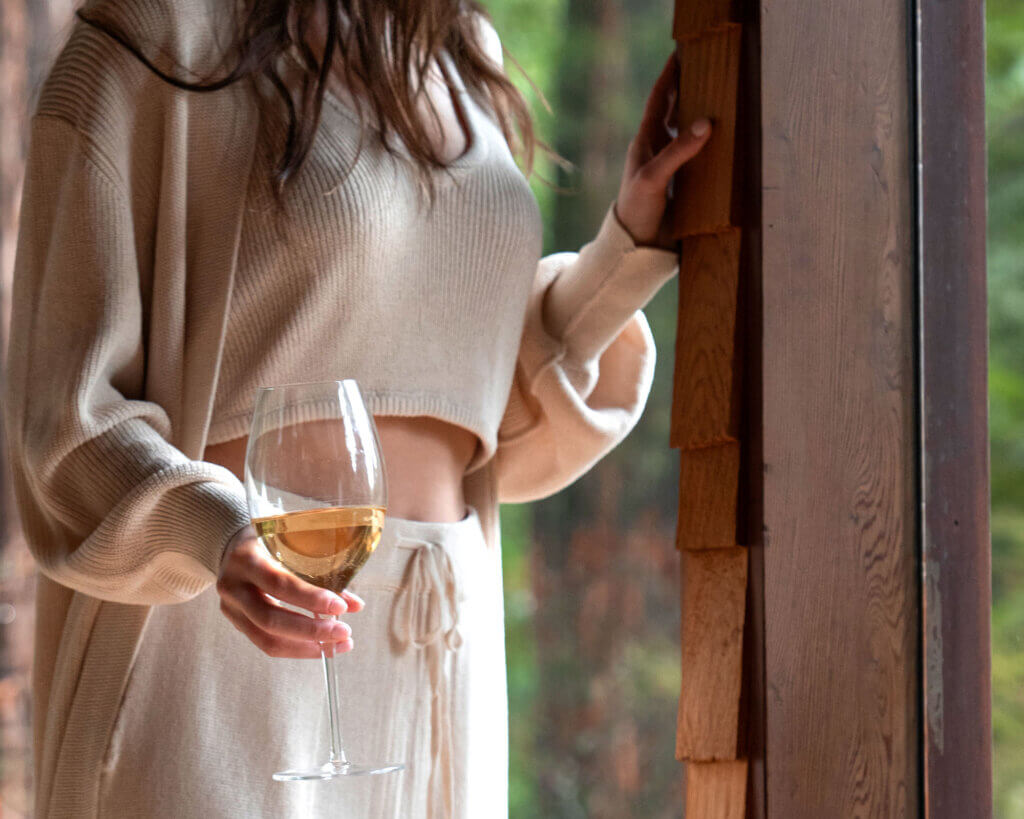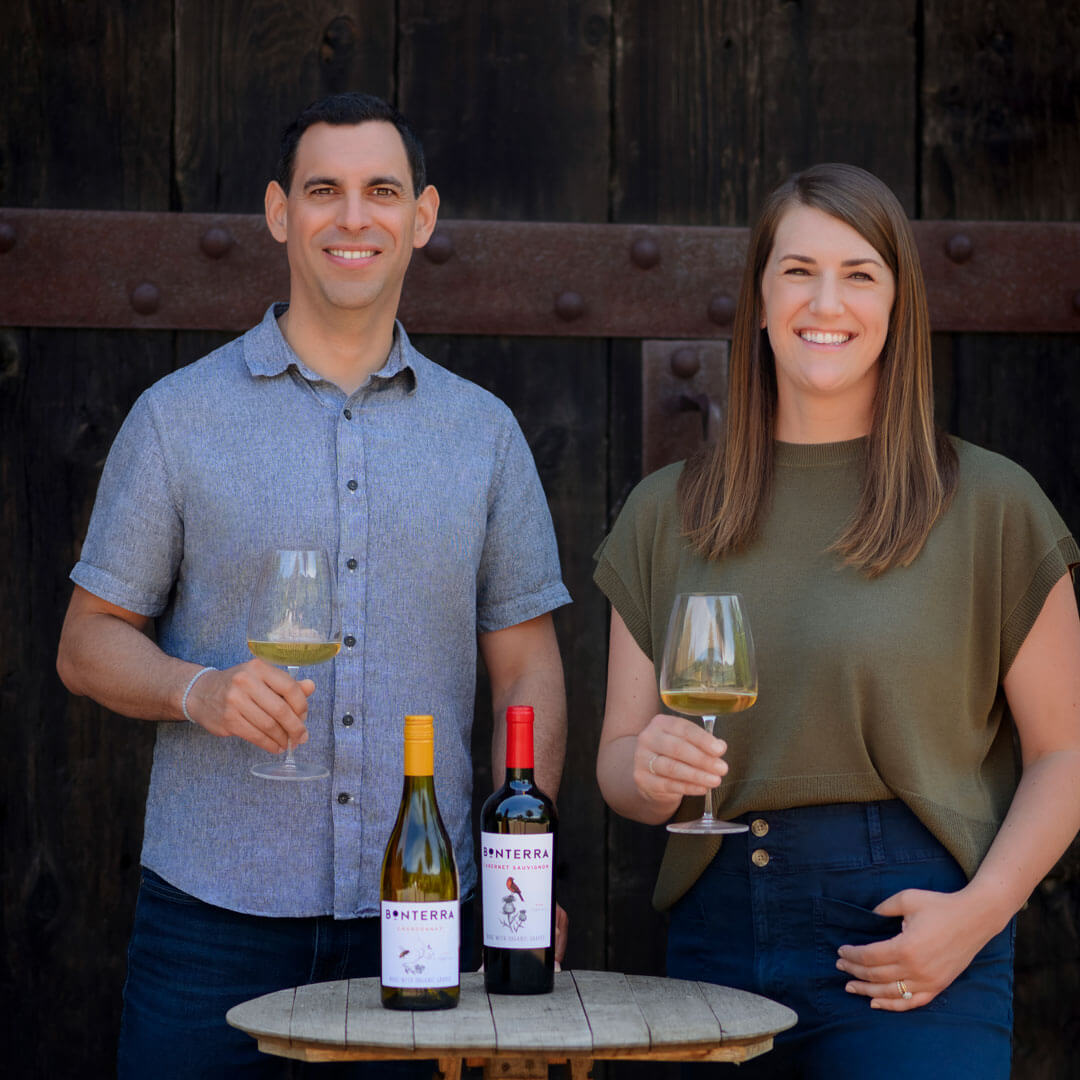The word “oak” comes up a lot in wine discussions. But why is that?
Many wines today are aged (and sometimes even fermented) in oak barrels, and nearly all of the world’s prestigious wines have spent some time in oak barrels before they are blended, bottled and released to the market. Aging wine in oak imparts aromas and flavors to the wine that it didn’t have before. Barrel aging also changes the texture – bringing oak tannins and other textural elements to the wine that result in a richer body and longer aging potential.
In this post, we’ll talk about the most common ways winemakers use oak to enhance the flavor, aroma, and texture of wine.
How Oak Aging Affects Flavor and Aroma
Oak barrels are made from wood that has been aged, cut, bent and bound together into a barrel shape, and then toasted over a fire to a desired level of toastiness. The amount of toast on the wood impacts the flavors and aromas that the barrel can impart to the wine. Lighter levels of toast produce notes of vanilla and actual toast, while heavier toast levels bring aromas of spice, smoke and chocolate. The darkest level of toast is called “alligator skin” because of its charcoal appearance; these barrels are generally used only for aging spirits like whisky or bourbon.
Winemakers choose barrels with the level of toast they want based on the aromas they want to bring to their wines. They also decide how much of each wine to age in oak, and how long to leave it there – the greater the proportion and the longer the time, the more intense the influence of the oak aging process. Some wines (like Bonterra Estate Chardonnay, for example) might have one-third of the final blend spending six months in barrel, while others like The McNab Cabernet Sauvignon might have all the wine aging in barrels for over a year.
The size of an oak wine barrel also affects how powerful an influence it will have on the wine. Smaller vessels, like barriques or cigarette barrels, allow for a relatively stronger influence, because a higher percentage of the wine will be in contact with the wood. Large casks or puncheons that hold twice the amount will have a much less dramatic effect.
Impact on Wine Texture and Mouthfeel
Oak barrels do more than just influence the way a wine smells and tastes, however; they also impact its texture.
Like grape skins, oak wood has natural tannins that can help build up a wine’s structure and longevity. This is why white wines – which are made without skin contact – can become fuller-bodied and more ageworthy after time in oak barrels. The tannins from the oak help build out structure and body, as well as stabilize the wine’s volatile aromas.
Oak barrel aging typically helps a wine gain a smoother, richer mouthfeel, as chemical compounds in the oak and wine interact with the small amount of oxygen that gets inside the barrels to create new compounds. Barrel-aged wines will generally have a richer, creamier texture than wines aged only in stainless steel. That softer texture is one of the main reasons winemakers age red and white wines in barrels.
Differences Between New and Old Oak Barrels
The power of oak influence on the wine inside it depends on several factors, but the most important one is the age of the barrel. “New barrels” – ones that have never been filled with wine before – have the strongest impact on wine. The wood is full of aromas, flavors and tannins, and it shares them generously with the first wine it meets.
Once-used barrels have a subtler influence, imparting softer oak nuances, and twice-used barrels have even more of a gentle touch. After four or five uses, a barrel is considered “neutral” – no longer transferring oak flavors and aromas into the wine at all. Neutral oak barrels are still quite valuable, however, because they continue to help wine achieve softer textures, without changing the aromas or flavors.
Winemakers typically use a combination of new and used barrels to achieve their desired result. This information is usually shared as a percentage, e.g. 25% new oak. This shorthand means that out of every four barrels used in the aging process of that wine, one of them was new.
The Influence of Different Types of Oak
Oak trees are part of the Quercus botanical family, which includes more than 500 species in the northern hemisphere. Nearly all of the oak used for wine barrels, though, comes from just three species. Because the aromas of these species are different from one another – and change based on where they are grown, even within the same species – the winemaker has a lot of options to choose from in making their barrel decisions.
American Oak
What winemakers call “American oak” is botanically known as Quercus alba, the white oak, which grows in temperate central and eastern parts of the United States. American oak is prized for its intensity, producing bold vanilla and coconut aromas with a delicious natural sweetness. It tends to impact wine more quickly than other oak species.
French Oak
“French oak” in winespeak means one of the two species of European oak – Quercus petraea and Quercus robur – that have been cultivated meticulously in France since the 1600s. French oak is generally considered more delicate and nuanced than American oak, imparting subtle vanilla notes and aromatic baking spice. It also adds greater length to the palate, and tannins that are often finer-grained than the tannins in American oak. (The slower the growth, the smaller the tree ring, the finer the tannins.)
Hungarian Oak
Hungarian oak comes from the same two species as French oak, but is simply grown in Hungary. Like France, Hungary has been strategically managing its oak forests for hundreds of years – which is good because the trees are exceptionally slow growing in their cold climate. Aromas from Hungarian oak are similar to French oak, but with slightly spicier notes.
Ok, enough reading. The best way to learn about oak aged wine is to taste it! Don’t forget to brush up on your wine etiquette before opening!
Taste for Oak
Set up a side-by-side to compare the texture impacts of oak, with the Bonterra Sauvignon Blanc (no oak at all) and the Estate Sauvignon Blanc (a portion was aged for four months in 100% neutral American oak barrels).
To taste different intensities of French oak, compare our Estate Cabernet Sauvignon (aged 6 months in 40% new French oak) with The McNab Cabernet Sauvignon (aged 14 months in 25% new French oak).
Bonterra wine is full of delicious flavors and aromas. Our organic winery is proud of our farming practices, using organically farmed grapes. Explore more of our collections and even buy wine online with us. If you’re a true wine lover, consider joining our wine club for exclusive offers and releases. Discover the bold and delicious flavors of oak aging with Bonterra.




